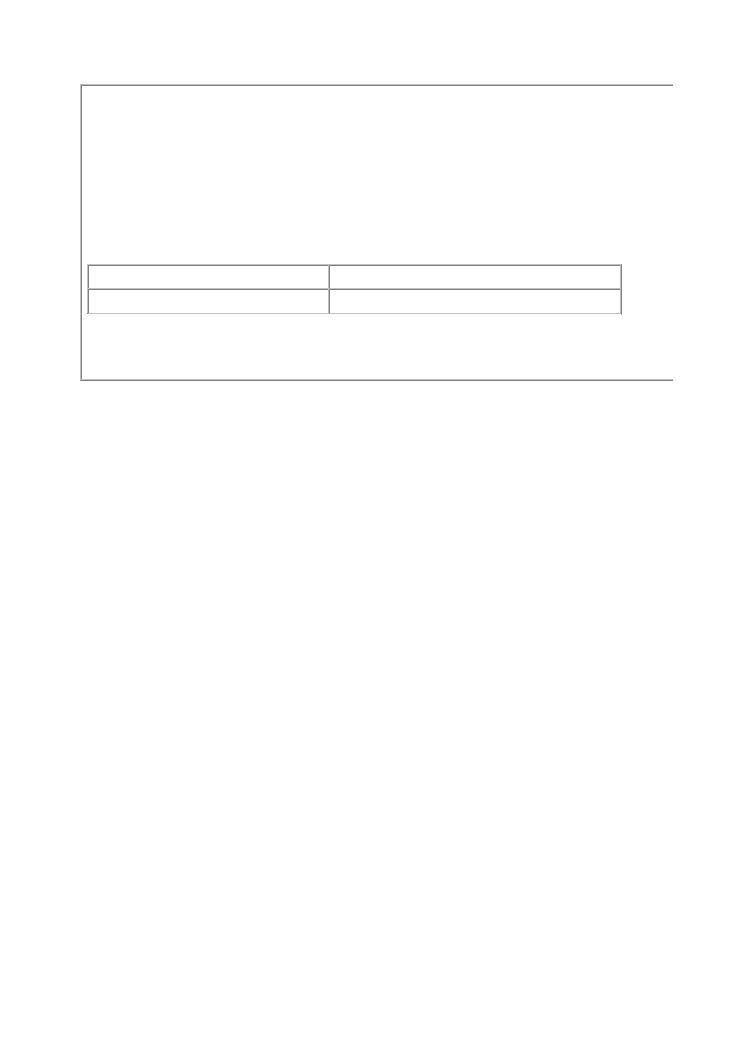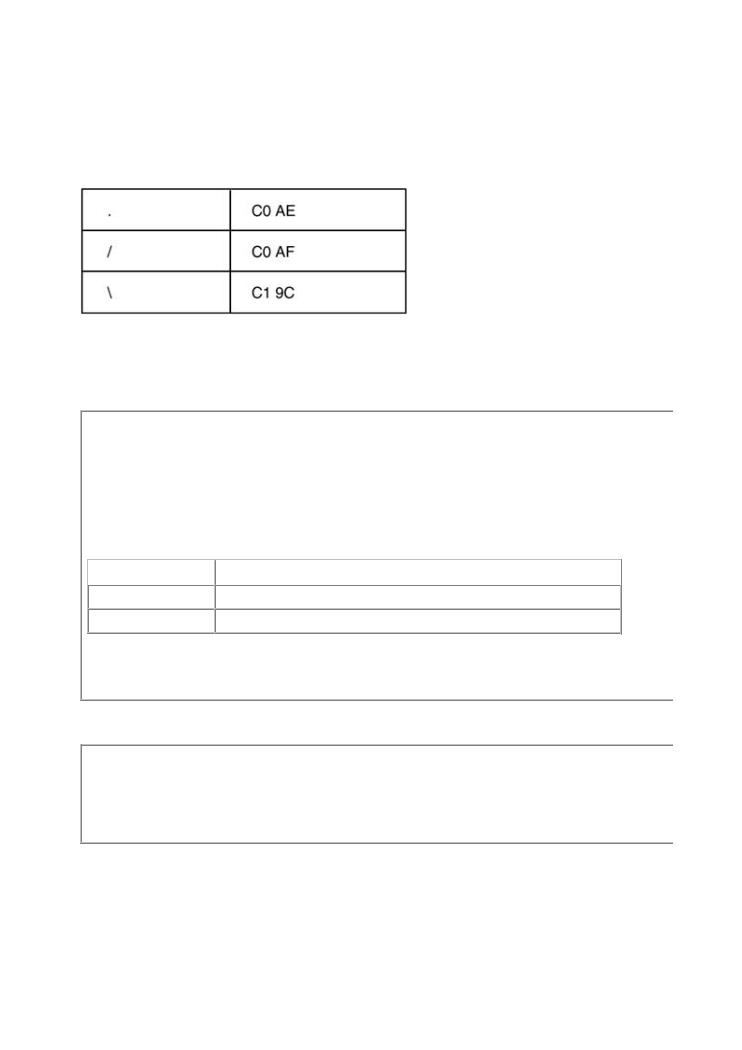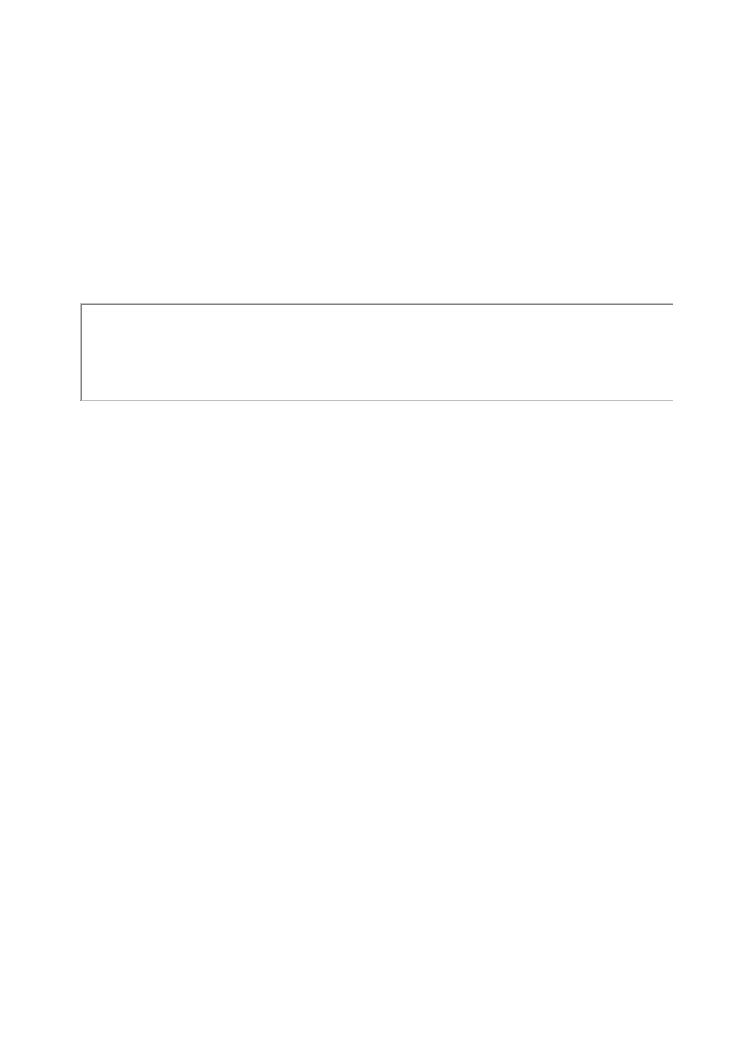
- •Exploiting Software How to Break Code
- •Table of Contents
- •Copyright
- •Praise for Exploiting Software
- •Attack Patterns
- •Foreword
- •Preface
- •What This Book Is About
- •How to Use This Book
- •But Isn't This Too Dangerous?
- •Acknowledgments
- •Greg's Acknowledgments
- •Gary's Acknowledgments
- •Bad Software Is Ubiquitous
- •The Trinity of Trouble
- •The Future of Software
- •What Is Software Security?
- •Conclusion
- •Chapter 2. Attack Patterns
- •A Taxonomy
- •An Open-Systems View
- •Tour of an Exploit
- •Attack Patterns: Blueprints for Disaster
- •An Example Exploit: Microsoft's Broken C++ Compiler
- •Applying Attack Patterns
- •Attack Pattern Boxes
- •Conclusion
- •Into the House of Logic
- •Should Reverse Engineering Be Illegal?
- •Reverse Engineering Tools and Concepts
- •Approaches to Reverse Engineering
- •Methods of the Reverser
- •Writing Interactive Disassembler (IDA) Plugins
- •Decompiling and Disassembling Software
- •Decompilation in Practice: Reversing helpctr.exe
- •Automatic, Bulk Auditing for Vulnerabilities
- •Writing Your Own Cracking Tools
- •Building a Basic Code Coverage Tool
- •Conclusion
- •Chapter 4. Exploiting Server Software
- •The Trusted Input Problem
- •The Privilege Escalation Problem
- •Finding Injection Points
- •Input Path Tracing
- •Exploiting Trust through Configuration
- •Specific Techniques and Attacks for Server Software
- •Conclusion
- •Chapter 5. Exploiting Client Software
- •Client-side Programs as Attack Targets
- •In-band Signals
- •Cross-site Scripting (XSS)
- •Client Scripts and Malicious Code
- •Content-Based Attacks
- •Conclusion
- •Chapter 6. Crafting (Malicious) Input
- •The Defender's Dilemma
- •Intrusion Detection (Not)
- •Partition Analysis
- •Tracing Code
- •Reversing Parser Code
- •Misclassification
- •Audit Poisoning
- •Conclusion
- •Chapter 7. Buffer Overflow
- •Buffer Overflow 101
- •Injection Vectors: Input Rides Again
- •Buffer Overflows and Embedded Systems
- •Database Buffer Overflows
- •Buffer Overflows and Java?!
- •Content-Based Buffer Overflow
- •Audit Truncation and Filters with Buffer Overflow
- •Causing Overflow with Environment Variables
- •The Multiple Operation Problem
- •Finding Potential Buffer Overflows
- •Stack Overflow
- •Arithmetic Errors in Memory Management
- •Format String Vulnerabilities
- •Heap Overflows
- •Buffer Overflows and C++
- •Payloads
- •Payloads on RISC Architectures
- •Multiplatform Payloads
- •Prolog/Epilog Code to Protect Functions
- •Conclusion
- •Chapter 8. Rootkits
- •Subversive Programs
- •A Simple Windows XP Kernel Rootkit
- •Call Hooking
- •Trojan Executable Redirection
- •Hiding Files and Directories
- •Patching Binary Code
- •The Hardware Virus
- •Low-Level Disk Access
- •Adding Network Support to a Driver
- •Interrupts
- •Key Logging
- •Advanced Rootkit Topics
- •Conclusion
- •References
- •Index

Misclassification
Classification is very important in software. Once a classification decision is made, a whole set of logic executes. Thus, mistakes in classification can be deadly.
•Software reliesTableveryof Contentsheavily on classification. Once a root decision is made, software makes calls• to particularIndex modules and/or runs through large sets of subroutines. A good example of requestExploitingclassificationSoftware H w toandBreakits inherentCode dangers involves the way HTTP servers decide what
kind of file is being requested: Scripts are to be handled by the scripting engine, executables
ByGreg Hoglund,Gary McGraw
by the cgi engine, and regular text files by the regular text file engine. Malicious hackers
figured out a long time ago how to request a file while fooling the Web server into believing
Publisher: Addison Wesley
the file was something else entirely. The most pervasive use of this technique involves
Pub Date: February 17, 2004
stealing binaries of cgi programs, or script files that contain hard-coded passwords and other
ISBN: 0-201-78695-8
interesting logic.
Pages: 512
Attack Pattern: Cause Web Server Misclassification
How does software break? How do attackers make software break on purpose? Why are firewalls, intrusion detection systems, and antivirus software not keeping out the bad guys?
What tools can be used to break software? This book provides the answers.
A very famous set of classification problems occurs when a Web server examines
the last few characters of a filename to determine what kind of file it is. There are Exploiting Softwareis loaded with examples of real attacks, attack patterns, tools, and
many ways to take advantage of these kinds of problems—appending certain techniques used by bad guys to break software. If you want to protect your software from
strings to file names, adding dots, and so forth.
attack, you must first learn how real attacks are really carried out.
This must-have book may shock you—and it will certainly educate you.Getting beyond the
script kiddie treatment found in many hacking books, you will learn about
* Attack Example: Misclassification in NTFS File Streams Specifier
Why software exploit will continue to be a serious problem
One Web server misclassification bug is exercised by appending the string ::$DATA to the
end of a filename. The Web server code looks at the last three characters in the string and
 When network security mechanisms do not work
When network security mechanisms do not work
seesATA. As a result, if you request /index.asp::$data, the Web server fails to detect that
what is being requested is an ASP file, and happily returns the contents of the file (revealing
Attack patterns
some logic best left hidden from attackers). The "asp dot" bug is another example of
misclassification. Reverse engineering
 Classic attacks against server software
Classic attacks against server software
 Surprising attacks against client software
Surprising attacks against client software
 Techniques for crafting malicious input
Techniques for crafting malicious input
 The technical details of buffer overflows
The technical details of buffer overflows
 Rootkits
Rootkits
Exploiting Softwareis filled with the tools, concepts, and knowledge necessary to break
software.

Building "Equivalent" Requests
A large number of commands are subject to parsing or filtering. In many cases a filter only con particular way to format a command. The fact is that the same command can usually be encode thousands of different ways. In many cases, an alternative encoding for the command will prod
• |
Table of Contents |
the same results as the original command. Thus, two commands that look different from the log |
|
• |
Index |
perspective of a filter end up producing the same semantic result. In many cases, an alternative
ExploitingcommandSoftwarecan beHowusedtotoBreakattackCodea software system, because the alternative command allows an
perform an operation that would otherwise be blocked.
ByGreg Hoglund,Gary McGraw
Publisher: Addison Wesley
MappingPub Date: Februarythe API17, 2004Layer
ISBN: 0-201-78695-8
A goodPages:approach512 to help identify and map possible alternate encodings involves writing a small that loops through all possible inputs to a given API call. This program can, for example, attem filenames in a variety of ways. For each iteration of the loop, the "mungified" filename can be p API call and the result noted.
The following code snippet loops through many possible values that can be used as a prefix to t
How does software break? How do attackers make software break on purpose? Why are \test.txt. Results of running a program like this can help us to determine which characters ca
firewalls, intrusion detection systems, and antivirus software not keeping out the bad guys? perform a ../../ (dots and slashes) relative traversal attack.
What tools can be used to break software? This book provides the answers.
Exploiting Softwareis loaded with examples of real attacks, attack patterns, tools, and techniques used by bad guys to break software. If you want to protect your software from attack, you must first learn how real attacks are really carried out.
This must-have book may shock you—and it will certainly educate you.Getting beyond the script kiddie treatment found in many hacking books, you will learn about
int main(intWhy sof wargc,e exploitchar*willargv[])continue to be a serious problem
{  When network security mechanisms do not work
When network security mechanisms do not work
Attack patterns
for(unsigned long c=0x01010101;c != -1;c++)
 {Reverse engineering
{Reverse engineering
 Classic attacks against server software char _filepath[255];
Classic attacks against server software char _filepath[255];
 Surprising attacks against client software
Surprising attacks against client software
sprintf(_filepath, "%c%c%c%c\\test.txt", c >> 24, c >> 16, c >> 8, c&0x
 Techniques for crafting malicious input
Techniques for crafting malicious input
 The technical details of buffer overflows
The technical details of buffer overflows
 Rootkits
Rootkits
try
Exploiting Softwareis filled with the tools, concepts, and knowledge necessary to break
software.{
FILE *in_file = fopen(_filepath, "r");
if(in_file)
{

printf("checking path %s\n", _filepath);
puts("file opened!");
getchar();
fclose(in_file);
•Table of Contents
•} Index
Exploiting Software How to Break Code
}
ByGreg Hoglund,Gary McGraw
catch(...)
Publisher: Addison Wesley
Pub Date: February 17, 2004
{
ISBN: 0-201-78695-8
Pages: 512
}
}
How does software break? How do attackers make software break on purpose? Why are firewalls, intrusion detection systems, and antivirus software not keeping out the bad guys?
What tools can be used to break software? This book provides the answers. return 0;
Exploiting Softwareis loaded with examples of real attacks, attack patterns, tools, and
}
techniques used by bad guys to break software. If you want to protect your software from attack, you must first learn how real attacks are really carried out.
This must-have book may shock you—and it will certainly educate you.Getting beyond the script kiddie treatment found in many hacking books, you will learn about
Slight (but still automatic) modifications can be made to the string in creative ways. Ultimately,
modified string boils down to an attempt to use different tricks to obtain the same file. For exam
Why software exploit will continue to be a serious problem resulting attempt might try a command like this:
 When network security mechanisms do not work
When network security mechanisms do not work
 Attack patterns
Attack patterns
 Reverse engineering
Reverse engineering
 Classic attacks against server software
Classic attacks against server software
 Surprising attacks against client software
Surprising attacks against client software
sprintf(_filepath, "..%c\\..%c\\..%c\\..%c\\scans2.txt", c, c, c, c);
 Techniques for crafting malicious input
Techniques for crafting malicious input
 The technical details of buffer overflows
The technical details of buffer overflows
Rootkits
A good way to think about this problem is to think of layers. The API call layer is what the exam
here are mapping. If an engineer has placed any filters in front of the API call, then these filters
Exploiting Softwareis filled with the tools, concepts, and knowledge necessary to break considered additional layers, wrapping the original set of possibilities. By pondering all the poss
software.
that can be provided at the API layer, we can begin uncovering and exercising any filters that t has in place. If we know that the software definitely uses file API calls, we can try all kinds of fil encoding tricks that we know about. If we get lucky, eventually one set of encoding tricks will w can get our data successfully through the filters and into the API call.
Drawing on the techniques described in Chapter 5, we can list a number of possible escape cod be injected into API calls (many of which help with the filter avoidance problem). If the data are being piped into a shell, for example, we might be able to get control codes to take effect. A pa may write data to a file or a stream that are eventually meant to be viewed on a terminal or in

program. As a simple example, the following string contains two backspace characters that are show up in the terminal's execution:
•Table of Contents
•Index
Exploiting Software How to Break Code
ByGreg Hoglund,Gary McGraw write("echo hey!\x08\x08");
Publisher: Addison Wesley
Pub Date: February 17, 2004
ISBN: 0-201-78695-8
When the terminal interprets the data we have passed in, the output will be missing the last tw
Pages: 512
of the original string. This kind of trick has been used for ages to corrupt data in log files. Log fi all kinds of data about a transaction. It may be possible to insert NULL characters (for example,
'\0') or to add so many extra characters to the string that the request is truncated in the log. I request that has more than a thousand extra characters tacked on at the end. Ultimately, the st
trimmed in the log file, and the important telltale data that expose an attack will be lost. How does software break? How do attackers make software break on purpose? Why are
firewalls, intrusion detection systems, and antivirus software not keeping out the bad guys?
What tools can be used to break software? This book provides the answers.
Ghost Characters
Exploiting Softwareis loaded with examples of real attacks, attack patterns, tools, and techniquesGhost charactusedrsbyarebadextraguyscharactersto br akthatsof wcanre.beIfaddedyou wantto atorequestprotect. Theyourextrasoftwarecharactersfrom are attto affectck, youthemustvalidityfirstoflearnthe requesthow real. Oneattackseasyareexamplereal y involvescarried outadding. extra slashes to a filena
cases, the strings
This must-have book may shock you—and it will certainly educate you.Getting beyond the script kiddie treatment found in many hacking books, you will learn about
 Why software exploit will continue to be a serious problem
Why software exploit will continue to be a serious problem
 When network security mechanisms do not work
When network security mechanisms do not work
 Attack patterns
Attack patterns
/some/directory/test.txt
Reverse engineering
 Classic attacks against server software
Classic attacks against server software
Surprising attacks against client software
and
 Techniques for crafting malicious input
Techniques for crafting malicious input
 The technical details of buffer overflows
The technical details of buffer overflows
 Rootkits
Rootkits
Exploiting Softwareis filled with the tools, concepts, and knowledge necessary to break
software.
/////////////////some/////////////directory//////////////test.txt
are equivalent requests.

|
Attack Pattern: Alternate Encoding the Leading Ghost Characters |
|
Some APIs will strip certain leading characters from a string of parameters. Perhaps these |
• |
characters are considered redundant, and for this reason they are removed. Another possibility |
Table of Contents |
|
• |
is the parser logic at the beginning of analysis is specialized in some way that causes some |
Index |
|
|
characters to be removed. The attacker can specify multiple types of alternative encodings at |
Exploiting Software How to Break Code |
|
|
the beginning of a string as a set of probes. |
ByGreg Hoglund,Gary McGraw |
|
|
One commonly used possibility involves adding ghost characters—extra characters that don't |
|
affect the validity of the request at the API layer. If the attacker has access to the API libraries |
|
Publisher: Addison Wesley |
|
being targeted, certain attack ideas can be tested directly in advance. Once alternative ghost |
|
Pub Date: February 17, 2004 |
|
encodings emerge through testing, the attacker can move from lab-based API testing to testin |
|
ISBN: 0-201-78695-8 |
|
real-world service implementations. |
|
Pages: 512 |
|
|
* Attack Example: Alternate Encoding with Ghost Characters in FTP and Web Serve
How does software break? How do attackers make software break on purpose? Why are
A good example covering the use of alternate encodings and ghost characters can be found in m
firewalls, intrusion detection systems, and antivirus software not keeping out the bad guys? Web server implementations. A number of implementations filter for attempts to carry out a dir
Whattraversaltoolsattcackn be. Inusomeed toexploits,break software?if the attackerThis booksuppliesprovidesa stringthe answerssuch as ..../../../winnt, t
will fail to filter things properly and the attacker will illegally gain access to a "protected" direct
Exploiting Softwareis loaded with examples of real attacks, attack patterns, tools, and
to this kind of attack lies in supplying the leading "..." (note the three dots). This is commonly r
techniques used by bad guys to break software. If you want to protect your software from atriple-dot vulnerability, even though it is indicative of a problem far more serious than consum
attack, you must first learn how real attacks are really carried out. dots.
This must-have book may shock you—and it will certainly educate you.Getting beyond the Using the file system API as the target, the following strings are all equivalent to many program
script kiddie treatment found in many hacking books, you will learn about
 Why software exploit will continue to be a serious problem
Why software exploit will continue to be a serious problem
 When network security mechanisms do not work
When network security mechanisms do not work
 Attack patterns
Attack patterns
 Reverse engineering
Reverse engineering
.../../../test.txt
 Classic attacks against server software
Classic attacks against server software
............/../../test.txt
 Surprising attacks against client software
Surprising attacks against client software
..?/../../test.txt
 Techniques for crafting malicious input
Techniques for crafting malicious input
..????????/../../test.txt
 The technical details of buffer overflows
The technical details of buffer overflows
../test.txt
 Rootkits
Rootkits
Exploiting Softwareis filled with the tools, concepts, and knowledge necessary to break software.
As you can see, there are many ways to make a semantically equivalent request. All these strin result in a request for the file ../test.txt.
* Attack Example: Alternate Encoding Tripledot in SpoonFTP
By using the triple dot, the attacker can traverse directories on SpoonFTP V1.1:

•Table of Contents
ftp>• cd ...Index
Exploiting Software How to Break Code
250 CWD command successful.
ByGreg Hoglund,Gary McGraw
ftp> pwd
Publisher: Addison Wesley
Pub Date: February 17, 2004
257 "/..." is current directory.
ISBN: 0-201-78695-8
Pages: 512
Equivalent Meta-characters
How does software break? How do attackers make software break on purpose? Why are
Delimiting characters are also special. They are used to separate commands or words in a requ firewalls, intrusion detection systems, and antivirus software not keeping out the bad guys?
tend to look for delimiters to determine how a command chunks up. When attacking a target AP What tools can be used to break software? This book provides the answers.
commonly used technique involves adding extra commands and causing them to execute. For t
understanding how to encode delimiting characters is of particular interest. A filter may be rem Exploiting Softwareis loaded with examples of real attacks, attack patterns, tools, and
otherwise watching for certain delimiting characters. Spotting a command separator in untruste techniques used by bad guys to break software. If you want to protect your software from
usually a dead giveaway that someone is attempting to insert extra commands. attack, you must first learn how real attacks are really carried out.
Consider the space character used to separate words (as in this sentence). Many software syste This must-have book may shock you—and it will certainly educate you.Getting beyond the
accept the tab character as a replacement for the space. To the program, white space is white s script kiddie treatment found in many hacking books, you will learn about
 Why software exploit will continue to be a serious problem
Why software exploit will continue to be a serious problem
 When network security mechanisms do not work
When network security mechanisms do not work
Attack Pattern: Using Slashes in Alternate Encoding
 Attack patterns
Attack patterns
Reverse engineering
Slash characters provide a particularly interesting case. Directory-driven systems, such as file
systems and databases, typically use the slash character to indicate traversal between
Classic attacks against server software
directories or other container components. For murky historical reasons, PCs (and, as a result,
Microsoft OSs) choose to use a backslash, whereas the UNIX world typically makes use of the
 Surprising attacks against client software
Surprising attacks against client software
forward slash. The schizophrenic result is that many MS-based systems are required to
understand both forms of the slash. This gives the attacker many opportunities to discover and
 Techniques for crafting malicious input
Techniques for crafting malicious input
abuse a number of common filtering problems. The goal of this pattern is to discover server
software that only applies filters to one version, but not the other. The technical details of buffer overflows
 Rootkits
Rootkits
* Attack Example: Slashes in Alternate Encodingsepts,
Exploiting Softwareis filled with the tools, and knowledge necessary to break software.
The two following requests are equivalent on most Web servers:

http://target server/some_directory\..\..\..\winnt
is equivalent to
•Table of Contents
•Index
Exploiting Software How to Break Code
ByGreg Hoglund,Gary McGraw
Publisher: Addison Wesley
Pub Date: February 17, 2004
ISBN: 0-201-78695-8
http://targetPages: 512 server/some_directory/../../../winnt
Multiple encoding conversion problems can also be leveraged as various slashes are instantiate How does software break? How do attackers make software break on purpose? Why are
encoded, UTF-8, or unicode. Consider the strings
firewalls, intrusion detection systems, and antivirus software not keeping out the bad guys? What tools can be used to break software? This book provides the answers.
Exploiting Softwareis loaded with examples of real attacks, attack patterns, tools, and techniques used by bad guys to break software. If you want to protect your software from attack, you must first learn how real attacks are really carried out.
This must-have book may shock you—and it will certainly educate you.Getting beyond the script kiddie treatment found in many hacking books, you will learn about
http://target server/some_directory\..%5C..%5C..\winnt
 Why software exploit will continue to be a serious problem
Why software exploit will continue to be a serious problem
 When network security mechanisms do not work
When network security mechanisms do not work
 Attack patterns
Attack patterns
where%5C is equivalent to the \character.
 Reverse engineering
Reverse engineering
EscapedClassic Metaattacks-charactersag inst server software
 Surprising attacks against client software
Surprising attacks against client software
Many filters look for all meta-characters, but may miss some if they are "escaped." An escape c
usually precedes a special sequence of characters. The special sequence will either be converted Techniques for crafting malicious input
character or it will be treated as a control character later in the input stream.
 The technical details of buffer overflows
The technical details of buffer overflows
Here is an example of how escape characters might be filtered. Note that testing is required to
actual behavior: Rootkits
ESCn where ESC is left in place and n is left in place as a normal character Exploiting Softwareis filled with the tools, concepts, and knowledge necessary to break
software.
ESCn where ESC is stripped and n is left in place as a normal character
(Substituten with a carriage return or a null byte.)

Attack Pattern: Using Escaped Slashes in Alternate Encoding
|
Providing a backslash as a leading character often causes a parser to believe that the next |
||||
|
character is special. This is called an escape. For example, the byte pair \0 might result in a |
||||
|
byte (a NULL) being sent. Another example is |
\t |
, which is sometimes converted |
||
•single zeroTable of Contents |
|
|
|
||
• |
into a tab character. There is often an equivalent encoding between the back slash and the |
||||
Index |
\/ |
results in a single forward slash. A single forward slas |
|||
|
escaped back slash. This means that |
||||
Exploiting Software How to Break Code |
|
|
|
||
|
also results in a single forward slash. The encoding table looks like this: |
||||
ByGreg Hoglund,Gary McGraw |
|
|
|
|
|
/ Publisher: Addison Wesley
Pub Date: February 17, 2004
\/
ISBN: 0-201-78695-8
/
/
Pages: 512
Having two alternate ways to encode the same character leads to filter problems and opens avenues to attack.
How does software break? How do attackers make software break on purpose? Why are
firewalls, intrusion detection systems, and antivirus software not keeping out the bad guys?
* Attack Example: Escaped Slashes in Alternate Encodings
What tools can be used to break software? This book provides the answers.
An attack leveraging this pattern is very simple. If you believe the target may be filtering the sl Exploiting Softwareis loaded with examples of real attacks, attack patterns, tools, and
to supply \/ and see what happens. Example command strings to try out include techniques used by bad guys to break software. If you want to protect your software from
attack, you must first learn how real attacks are really carried out.
This must-have book may shock you—and it will certainly educate you.Getting beyond the script kiddie treatment found in many hacking books, you will learn about
 Why software exploit will continue to be a serious problem
Why software exploit will continue to be a serious problem
 When network security mechanisms do not work
When network security mechanisms do not work
CWD ..\/..\/..\/..\/winnt
 Attack patterns
Attack patterns
 Reverse engineering
Reverse engineering
 Classic attacks against server software which converts in many cases to
Classic attacks against server software which converts in many cases to
 Surprising attacks against client software
Surprising attacks against client software
 Techniques for crafting malicious input
Techniques for crafting malicious input
 The technical details of buffer overflows
The technical details of buffer overflows
 Rootkits
Rootkits
Exploiting Softwareis filled with the tools, concepts, and knowledge necessary to break
software.
CWD ../../../../winnt
To probe for this kind of problem, a small C program that uses string output routines can be ve File system calls make excellent testing fodder. The simple snippet

•Table of Contents
•Index
Exploiting Software How to Break Code
ByGreg Hoglund,Gary McGraw
Publisher: Addison Wesley
Pub Date: February 17, 2004
ISBN: 0-201-78695-8
Pages: 512
How does software break? How do attackers make software break on purpose? Why are firewalls, intrusion detection systems, and antivirus software not keeping out the bad guys?
What tools can be used to break software? This book provides the answers. int main(int argc, char* argv[])
Exploiting Softwareis loaded with examples of real attacks, attack patterns, tools, and
{
techniques used by bad guys to break software. If you want to protect your software from
attack, you must first learn how real attacks are really carried out. puts("\/ \\ \? \. \| ");
This must-have book may shock you—and it will certainly educate you.Getting beyond the
return 0;
script kiddie treatment found in many hacking books, you will learn about
}
 Why software exploit will continue to be a serious problem
Why software exploit will continue to be a serious problem
 When network security mechanisms do not work
When network security mechanisms do not work
Attack patterns produces the output
 Reverse engineering
Reverse engineering
 Classic attacks against server software
Classic attacks against server software
 Surprising attacks against client software
Surprising attacks against client software
 Techniques for crafting malicious input
Techniques for crafting malicious input
 The technical details of buffer overflows
The technical details of buffer overflows
/ \ ? . |
 Rootkits
Rootkits
Exploiting Softwareis filled with the tools, concepts, and knowledge necessary to break software.
Clearly, the back slash is ignored, and thus we have hit on a number of alternative encodings to with. Given our previous example, we can extend the attack to include other possibilities:

CWD ..\?\?\?\?\/..\/..\/..\/winnt
CWD \.\.\/\.\.\/\.\.\/\.\.\/winnt
CWD ..\|\|\|\|\/..\/..\/..\/winnt
• Table of Contents
• Index
Exploiting Software How to Break Code
ByGreg Hoglund,Gary McGraw
Character Conversion
Publisher: Addison Wesley
Pub Date: February 17, 2004
Cases where one part of the software converts data before the data are passed on to the next p
ISBN: 0-201-78695-8
make good targets. In these "data chains," characters often get converted many times. For exa
Pages: 512
user supplies the + character to a standard-issue Web server, it will be converted into a space b
used on the file system.
How does software break? How do attackers make software break on purpose? Why are
firewalls, intrusion detection systems, and antivirus software not keeping out the bad guys? WhatAttacktoolsPattern:c be usedUnicodeto break software?EncodingThis book provides the answers.
Exploiting Softwareis loaded with examples of real attacks, attack patterns, tools, and
techniques used by bad guys to break software. If you want to protect your software from Unicode is a system for encoding character strings in a 16-bit representation so that character
attack, you must first learn how real attacks are really carried out.
from a number of different languages can be represented. Unicode involves using 2 bytes for
every character instead of the customary single byte found in ASCII encoding. Any system tha
This must-have book may shock you—and it will certainly educate you.Getting beyond the
is unicode aware may be capable of converting unicode strings into ASCII byte strings. If the
script kiddie treatment found in many hacking books, you will learn about
native language of the system or the APIs that are being used require normal byte strings,
then the system may provide for a translation from unicode.
 Why software exploit will continue to be a serious problem
Why software exploit will continue to be a serious problem
The advantage to an attacker begins when some of the components of the system are not
unicode aware. In this case, the attacker may provide a unicode string in the hopes that a
 When network security mechanisms do not work
When network security mechanisms do not work
filtering mechanism or classifying mechanism will fail to understand the request. This can
result in slipping past a content filter and/or possibly causing the application to route a reques Attack patterns
incorrectly.
 Reverse engineering
Reverse engineering
 Classic attacks against server software
Classic attacks against server software
* Attack Example: Unicode Encodings in the IIS Server
 Surprising attacks against client software
Surprising attacks against client software
A very common technique for a unicode attack involves traversing directories looking for interes
 Techniques for crafting malicious input example of this idea applied to the Web is
Techniques for crafting malicious input example of this idea applied to the Web is
 The technical details of buffer overflows
The technical details of buffer overflows
 Rootkits
Rootkits
Exploiting Softwareis filled with the tools, concepts, and knowledge necessary to break
software.
http://target.server/some_directory/../../../winnt

In this case, the attacker is attempting to traverse to a directory that is not supposed to be part Web services. The trick is fairly obvious, so many Web servers and scripts prevent it. However, alternate encoding tricks, an attacker may be able to get around badly implemented request filt
In October 2000, a hacker publicly revealed that Microsoft's IIS server suffered from a variation problem. In the case of IIS, all the attacker had to do was provide alternate encodings for the d slashes found in a classic attack. The unicode translations are
Pages: 512
Using this conversion, the previously displayed URL can be encoded as
http://target.server/some_directory/%C0AE/%C0AE/%C0AE%C0AE/%C0AE%C0AE/winnt
How does software break? How do attackers make software break on purpose? Why are
firewalls, intrusion detection systems, and antivirus software not keeping out the bad guys?
What tools can be used to break software? This book provides the answers.
Attack Pattern: UTF-8 Encoding
Exploiting Softwareis loaded with examples of real attacks, attack patterns, tools, and
techniques used by bad guys to break software. If you want to protect your software from UTF-8 is a system for encoding characters using a variable number of bytes. Instead of simply
attack, you must first learn how real attacks are really carried out.
using 2 bytes as in unicode, a character can be encoded with 1, 2, or even 3 bytes. The
characters described in the previous unicode subgroup are shown here encoded using three
This must-have book may shock you—and it will certainly educate you.Getting beyond the bytes in UTF-8:
script kiddie treatment found in many hacking books, you will learn about
. |
|
F0 80 AE |
|
Why software exploit will continue to be a serious problem |
|
/E0 80 AF
 When network security mechanisms do not work
When network security mechanisms do not work
\F0 81 9C
 Attack patterns
Attack patterns
 Reverse engineering
Reverse engineering
The RFC that defines UTF-8 encoding is RFC-2044. UTF-8 makes a decent target for the same
reasons that unicode does.
Classic attacks again t server software
 Surprising attacks against client software
Surprising attacks against client software
 Techniques for crafting malicious input
Techniques for crafting malicious input
The technical details of buffer overflows
Attack Pattern: URL Encoding
 Rootkits
Rootkits
In many cases, a character can be encoded as %HEX-CODE in URL strings. This has led to a
Exploitingnumber ofSoftwareclassic filteringis filledproblemswith the. tools, concepts, and knowledge necessary to break
software.
* Attack Example: URL Encodings in IceCast MP3 Server
The following type of encoded string has been known traverse directories against the IceCast M
[9] For more information, go to http://www.securitytracker.com/alerts/2001/Dec/1002904.html.

http://[targethost]:8000/somefile/%2E%2E/target.mp3
• Table of Contents
• Index
Exploiting Software How to Break Code
ByGreg Hoglund,Gary McGraw
or using "/%25%25/" instead of "/../".
Publisher: Addison Wesley
Pub Date: February 17, 2004
* AttackISBNExample:0-201-78695URL-8 Encodings in Titan Application Firewall
Pages: 512
The Titan application firewall fails to decode hex-encoded and URL-encoded characters. For exa not filter %2E.
Many other examples of alternate encoding exist. These include ucs-2 unicode, HTML escape co evenHow doessuchsoftwaretrivial changesbreak?involvingHow do attcharacterckers makecase problemssoftware breakand convertingpurpose?spacesWhytoaretab chara
firewalls, intrusion detection systems, and antivirus software not keeping out the bad guys?
All these encoding situations lead to possible encoding fun.
What tools can be used to break software? This book provides the answers.
Exploiting Softwareis loaded with examples of real attacks, attack patterns, tools, and techniques used by bad guys to break software. If you want to protect your software from attack, you must first learn how real attacks are really carried out.
Attack Pattern: Alternative IP Addresses
This must-have book may shock you—and it will certainly educate you.Getting beyond the script kiddie treatment found in many hacking books, you will learn about
IP address ranges can be represented using alternative methods. Here are some examples:
 Why software exploit will continue to be a serious problem
Why software exploit will continue to be a serious problem
 When network security mechanisms do not work
When network security mechanisms do not work
 Attack patterns
Attack patterns
 Reverse engineering
Reverse engineering
 Classic attacks against server software
Classic attacks against server software
192.160.0.0/24
 Surprising attacks against client software
Surprising attacks against client software
192.168.0.0/255.255.255.0
 Techniques for crafting malicious input
Techniques for crafting malicious input
192.168.0.*
 The technical details of buffer overflows
The technical details of buffer overflows
 Rootkits
Rootkits
Exploiting Softwareis filled with the tools, concepts, and knowledge necessary to break Classic encoding attacks can be directed against IP numbers as well.
software.
* Attack Example: Dotless IP Addresses in Internet Explorer
Alternate encoding of IP numbers poses problems to filters and other security measures that ne interpret values properly such as ports and IP addresses. URL filtering in general is plagued wit problems. The Microsoft Internet Explorer package allows specification of the IP address in a va number formats.[10] Here are some equivalent ways to request the same Internet Web site:

[10] For more on this issue, go to http://www.securitytracker.com/alerts/2001/Oct/1002531.html.
http://msdn.microsoft.com
http://207.46.239.122
http://3475959674
•Table of Contents
•Index
CombinedExploiting SoftwareAttacksHow to Break Code
ByGreg Hoglund,Gary McGraw
Ultimately, all of the tricks described here can be combined in various ways.
Publisher: Addison Wesley
Pub Date: February 17, 2004
ISBN: 0-201-78695-8
Pages: 512
Attack Pattern: Slashes and URL Encoding Combined
Combine two (or more) encoding tricks.
How does software break? How do attackers make software break on purpose? Why are
firewalls, intrusion detection systems, and antivirus software not keeping out the bad guys?
What tools can be used to break software? This book provides the answers.
* Attack Example: Combined Encodings CesarFTP
Exploiting Softwareis loaded with examples of real attacks, attack patterns, tools, and
techniques used by bad guys to break software. If you want to protect your software from Alexandre Cesari released a freeware FTP server for Windows that fails to provide proper filterin
attack, you must first learn how real attacks are really carried out.
multiple encoding. The FTP server, CesarFTP, included a Web server component that could be a
a combination of the triple-dot and URL encoding attacks.
This must-have book may shock you—and it will certainly educate you.Getting beyond the
script kiddie treatment found in many hacking books, you will learn about An attacker could provide a URL that included a string like
 Why software exploit will continue to be a serious problem
Why software exploit will continue to be a serious problem
 When network security mechanisms do not work
When network security mechanisms do not work
 Attack patterns
Attack patterns
 Reverse engineering
Reverse engineering
/...%5C/Classic attacks against server software
 Surprising attacks against client software
Surprising attacks against client software
 Techniques for crafting malicious input
Techniques for crafting malicious input
This is an interesting exploit because it involves an aggregation of several tricks—the escape ch
The technical details of buffer overflows encoding, and the triple dot.
 Rootkits
Rootkits
Exploiting Softwareis filled with the tools, concepts, and knowledge necessary to break
software.
